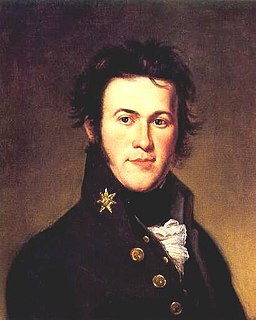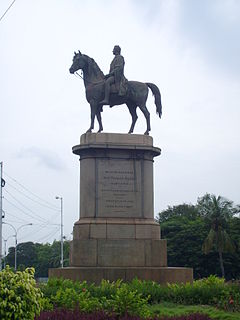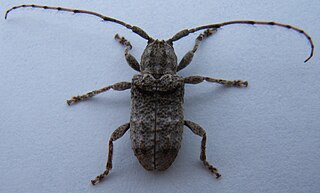
Frederick John Robinson, 1st Earl of Ripon,, styled The Honourable F. J. Robinson until 1827 and known between 1827 and 1833 as Viscount Goderich, the name by which he is best known to history, was Prime Minister of the United Kingdom between August 1827 and January 1828.

Thomas Say was an American entomologist, conchologist, and herpetologist. His definitive studies of insects and shells, numerous contributions to scientific journals, and scientific expeditions to Florida, Georgia, the Rocky Mountains, Mexico, and elsewhere made him an internationally known naturalist. Say has been called the father of American descriptive entomology and American conchology. He served as librarian for the Academy of Natural Sciences of Philadelphia, curator at the American Philosophical Society, and professor of natural history at the University of Pennsylvania.
Gregory M. Cochran is an American anthropologist and author who argues that cultural innovation resulted in new and constantly shifting selection pressures for genetic change, thereby accelerating human evolution and divergence between human races. From 2004 to 2015, he was a research associate at the anthropology department at the University of Utah. He is co-author of the book The 10,000 Year Explosion.

Elections to the United States House of Representatives for the 20th Congress were held at various dates in each state in 1826 and 1827 during John Quincy Adams's presidency.

The Boridae are a small family of beetles with no vernacular common name, though recent authors have coined the name conifer bark beetles. They feed on decaying cambium and require forests with standing dead trees and with intensive forest management some species have become rare and threatened.
This article lists all known poems by American author and critic Edgar Allan Poe, listed alphabetically with the date of their authorship in parentheses.

Prey is a commune in the Vosges department in Grand Est in northeastern France.

Pomacea is a genus of freshwater snails with gills and an operculum, aquatic gastropod mollusks in the family Ampullariidae, the apple snails. The genus is native to the Americas; most species in this genus are restricted to South America.

Chlorops is a genus of fly in the family Chloropidae.
Gymnastes is a genus of crane fly in the family Limoniidae.
Brigadier-General Alexander Champion was Commander-in-Chief, India.

Esperia is a genus of the concealer moth family (Oecophoridae). Among these, it belongs to subfamily Oecophorinae. Most authors include Dasycera here, though approaches that generally follow a "splitting" approach sometimes do not.
The United States Senate elections of 1826 and 1827 were elections that had the majority Jacksonians gain a seat in the United States Senate.

The statue of Thomas Munro is an equestrian statue of Thomas Munro, 1st Baronet, Major-General in the British Army and Governor of Madras from 1820 to 1827, located in the city of Chennai, India. The bronze statue sculpted by Francis Chantrey in the United Kingdom in 1834 and shipped to Madras in 1839, is one of the popular landmarks in Chennai. The absence of stirrups is one of the peculiarities of the statue and for this reason, it is also referred to as "The Stirrupless Majesty".

The Dasycerinae are a subfamily of the Staphylinidae (Coleoptera) rove beetles.

Pogonocherini is a tribe of longhorn beetles of the subfamily Lamiinae.

Ecyrus is a genus of longhorn beetles of the subfamily Lamiinae, containing the following species:

Ecyrus arcuatus is a species of beetle in the family Cerambycidae. It was described by Charles Joseph Gahan in 1892. It is known from Mexico, Honduras, Guatemala, and United States.
Ecyrus hirtipes is a species of beetle in the family Cerambycidae. It was described by Charles Joseph Gahan in 1895. It is known from Guadeloupe, Barbados, Martinique, Cuba, Saint Vincent and the Grenadines, the Dominican Republic, Bahamas, Grenada, Haiti, and Puerto Rico. It feeds on Inga ingoides.












